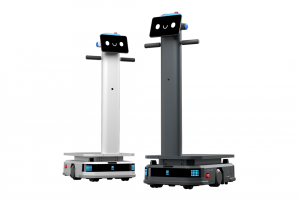Mastering the Art of Everyday Negotiations
![]() Most of our interactions with others are essentially a series of negotiations, and we do ourselves a huge disservice by not knowing the basic tenets. We negotiate with our friends about what to do on Saturday night, we negotiate with our family about who does the dishes and who pays the bills, we negotiate with our colleagues about who will stay late to complete an assignment, and we negotiate with sales people on the price of a car. We negotiate all day, but most of us don’t even realize it, nor do we have a clue how to do it well.
Most of our interactions with others are essentially a series of negotiations, and we do ourselves a huge disservice by not knowing the basic tenets. We negotiate with our friends about what to do on Saturday night, we negotiate with our family about who does the dishes and who pays the bills, we negotiate with our colleagues about who will stay late to complete an assignment, and we negotiate with sales people on the price of a car. We negotiate all day, but most of us don’t even realize it, nor do we have a clue how to do it well.
I run an exercise in my class at Stanford that on the surface appears to be a simple negotiation between a job candidate and an employer. There are eight terms—including salary, vacation time, and job assignment—to nail down, and each person has point values associated with each of the terms. Their individual goal is to each maximize their own points. Usually, the pairs of negotiators go down the list in order, trying to agree on each item. They quickly realize, however, that this strategy isn’t going to work.
At the end of the thirty-minute negotiation, some of the negotiators have come to a resolution and others have decided to walk away without a deal. Those who have reached an agreement fall into one of two categories: those who are eager to work together, and those who feel uncomfortable with the outcome. Some pairs end up with similar point totals at the end, while others have wildly different totals. So what happened?
The most common mistake in this negotiation is making inaccurate assumptions, and the most common assumption is that the recruiter and the candidate have opposing goals. The candidate assumes the recruiter wants the exact opposite of everything the candidate wants, when in actuality they have two objectives in common, two that are opposing, two that are much more important to the candidate, and two that are much more important to the recruiter.
Though contrived, this case mirrors most situations in life. Parties often share interests, even when they believe they’re on opposite sides of an issue, and some issues are usually more important to one person than to the other.
Everyone Has Their Price: The Trick is Finding their Currency
The key to a successful negotiation is to ferret out everyone’s interests so you can maximize the outcome for everyone. This is easier said than done, since most people hold their interests close to the vest, believing this gives them a stronger negotiating position. But oftentimes this strategy is misguided, because in actuality what you want might be right in line with what the other party wants.
Let’s take my recent experience purchasing a car. I assumed the salesperson wanted me to spend as much as possible, because I wanted to spend as little as possible. But I decided to test this assumption. While test-driving the car, I asked a lot of questions about the automobile industry, including how sales people are compensated. I learned that this salesperson’s commission had nothing to do with the price I paid. His bonus was based upon getting an excellent evaluation from each customer regardless of the price of the car.
I told him that wasn’t a problem for me, and that I’d be delighted to give him a fabulous review in return for a great price. We found a win-win situation. I would never have known or imagined that our interests were aligned unless I took the time to explore them.
The good news is that you get opportunities to negotiate every day and so have many chances to practice this skill. Stan Christensen, who teaches a course on negotiation at Stanford, has built his career around extracting the most value from negotiations. He has found that most people leave a lot of value on the table because they make assumptions that aren’t correct. Stan recommends looking for surprises when you negotiate, because surprises indicate you’ve made inaccurate assumptions.
He also advises you to pick your negotiating approach based on the interests and style of the person with whom you’re negotiating, not on your own interests. Don’t walk into any negotiation with a clearly defined plan, but instead listen to what’s said by the other party and figure out what drives them. Doing so will help you craft a positive outcome for both sides.
Good News: You Can Practice On Your Kids
![]() Being a parent offers endless opportunities to hone negotiating skills. For example, several years ago, my son Josh wanted to purchase a new bicycle. He was interested in competing as a road cyclist and “needed” a fancy new bike. He came to me and said, “I’ve done all my research and have found the perfect bike. It’s really important to me.” Our response was, “That’s nice. . . There’s no way we’re going to spend that much money on a bike. We would be willing to spend half that amount. But perhaps you can find a way to make purchasing the bike more attractive to us?”
Being a parent offers endless opportunities to hone negotiating skills. For example, several years ago, my son Josh wanted to purchase a new bicycle. He was interested in competing as a road cyclist and “needed” a fancy new bike. He came to me and said, “I’ve done all my research and have found the perfect bike. It’s really important to me.” Our response was, “That’s nice. . . There’s no way we’re going to spend that much money on a bike. We would be willing to spend half that amount. But perhaps you can find a way to make purchasing the bike more attractive to us?”
I urged Josh to think of things he could do for us that would be worth the price of the bike. What could he do to make our life easier?
He thought for a few days and came back with a proposal. He offered to do all of his own laundry and to both shop for food and cook dinner for the family three nights a week. I took this under consideration and decided it was a good deal. By doing his laundry and making dinner, he was saving me and my husband a lot of time, and he would be learning some important skills.
We agreed to the deal. Josh got the bike and took his new responsibilities seriously. Like all parents, we’ve had many other opportunities to negotiate future “deals,” which goes to show that the most important outcome of any negotiation is to get to the next negotiation. The first deal is just the beginning.
If the first negotiation is fair and balanced, and both parties follow through on their commitments, then chances are the next negotiation will go even more smoothly. As mentioned several times, we live in a very small world, where repeat appearances are the norm.
[Editor’s Note: Cross-posted at Psychology Today. This blog post is an edited excerpt from What I Wish I Knew When I Was 20, published by HarperCollins in April 2006. Tina Seelig is the Executive Director for the Stanford Technology Ventures Program. –mrh]
A message from John Furrier, co-founder of SiliconANGLE:
Your vote of support is important to us and it helps us keep the content FREE.
One click below supports our mission to provide free, deep, and relevant content.
Join our community on YouTube
Join the community that includes more than 15,000 #CubeAlumni experts, including Amazon.com CEO Andy Jassy, Dell Technologies founder and CEO Michael Dell, Intel CEO Pat Gelsinger, and many more luminaries and experts.
THANK YOU













